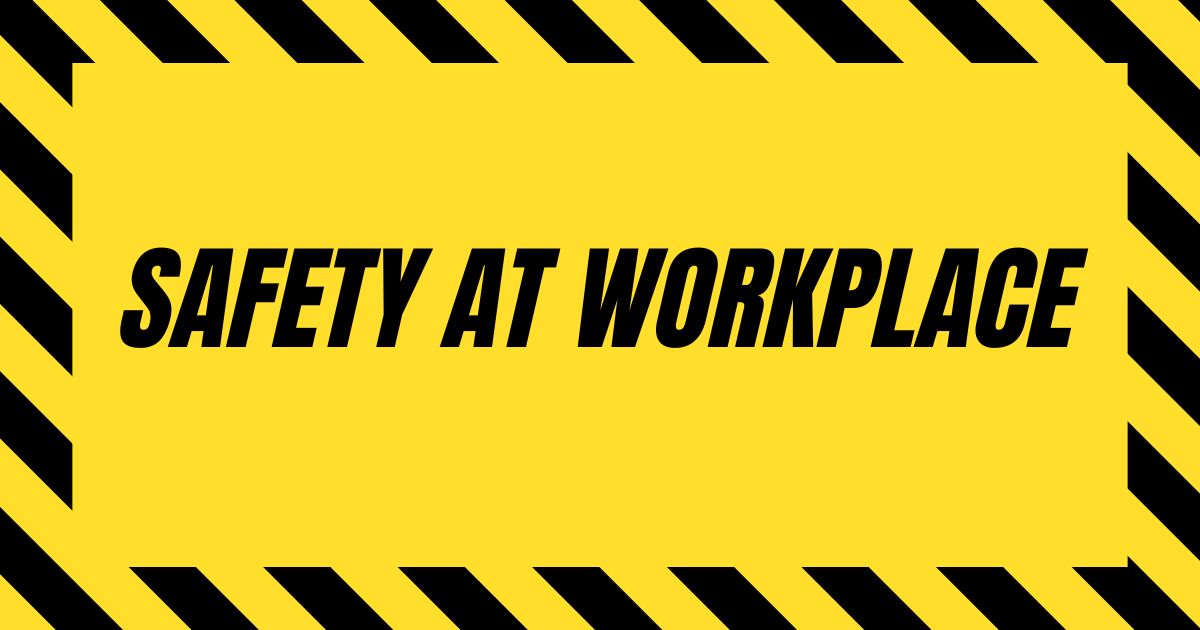Purpose:
The purpose of the Safety procedure is to provide awareness about safety and to develop a state of readiness, which will allow for a prompt and orderly response to an emergency and compliance with statutory obligations. This safety plan is structured around four major objectives.
- Understanding the type and extent of potential emergencies (Risk / Exposures)
- Establishing a high order of preparedness (equipment, personnel) and commensurate with the risk.
- Ensuring an orderly and timely decision-making response process.
- Providing an incident management organization with a clear mission and line of authority.
Scope:
The Procedure deals with the Fire safety and Work safety conditions for every person available on the company premises and for machines.
Responsibility:
| S. No | Activity | Responsibility | Frequency |
|---|---|---|---|
| 01 | Training for Safety | HOD / HR / External | Once in 6 Months |
| 02 | Mock Drill | HOD / HR / External | Once in 6 Months |
Accident definition:
Major Accident:
When there is a need to go to the Hospital for treatment
Minor Accident:
When there is a small injury & treatment can be done with first aid only.
Near Miss:
It is an unplanned event when there is no injury, illness, or property loss.
Safety Procedure:
Safety procedure list:
- Identify hazards
- Assess risks
- Implement Safety Policies and Procedures
- Provide Safety Training
- Maintain Equipment and Machinery
- Encourage Reporting and Investigation
- Enforce Safety Regulations
- Foster Safety Awareness and Engagement
- Continuously Improve Safety Performance
- Emergency Preparedness
Safety Procedure explanation:
Identify Hazards:
- Conduct a thorough assessment of the workplace to identify potential hazards, such as chemicals, machinery, electrical equipment, or ergonomic issues.
- Involve employees in the hazard identification process, as they are often most familiar with the day-to-day operations and can provide valuable insights.
Assess Risks:
- Evaluate the risks associated with each identified hazard by considering the likelihood and potential severity of accidents or injuries.
- Prioritize risks based on their severity to allocate resources effectively and address the most critical issues first.
Implement Safety Policies and Procedures:
- Develop comprehensive safety policies and procedures that address the identified hazards and risks.
- Communicate these policies and procedures to all employees, ensuring they understand their roles and responsibilities in maintaining a safe working environment.
- Regularly update and review safety policies and procedures to reflect changes in regulations, technologies, or work processes.
Provide Safety Training:
- Conduct regular safety training programs for all employees, including new hires and contractors, to educate them on the potential hazards, safety protocols, and emergency procedures.
- Ensure that employees are trained in the proper use of personal protective equipment (PPE) and other safety devices specific to their roles.
- PPEs are provided to operators/staff according to their working conditions and PPE applicability is shown in the PPE Matrix and each area’s work instruction
- On-the-job safety training (self and machine) will be given to every operator/staff member who is working in the plant and maintaining records.
- Provide training related to Fire Extinguishers, First-Aid & make a Certified team for Fire Extinguisher & First-Aid
Maintain Equipment and Machinery:
- Establish a regular maintenance schedule for all equipment and machinery, ensuring that they are in proper working condition and comply with safety standards.
- Conduct inspections and repairs promptly to address any identified issues that may compromise safety.
- A safety emergency switch is provided on all the machines.
- A safety guard / Safety sensor is provided in all the press machines.
- Training is provided to operators to run the machine safely.
Encourage Reporting and Investigation:
- Promote a culture of safety by encouraging employees to report any safety concerns, near misses, or accidents promptly.
- Investigate all reported incidents to identify the root causes, take corrective actions, and prevent similar incidents from occurring in the future.
- Any Incident/Accident that happens in the company is recorded in the Accident/Incident form. All types of accidents are monitored through the Safety Tree displayed at the entry into the company.
Accident/Incident Form:
Enforce Safety Regulations:
- Comply with all applicable safety regulations, standards, and guidelines set by relevant authorities or regulatory bodies.
- Regularly monitor and audit workplace practices to ensure ongoing compliance with safety regulations.
Foster Safety Awareness and Engagement:
- Organize safety campaigns, toolbox talks, and workshops to enhance safety awareness among employees.
- Encourage employee engagement in safety initiatives by establishing safety committees, involving employees in safety inspections, and recognizing and rewarding safe behaviors.
Continuously Improve Safety Performance:
- Establish key performance indicators (KPIs) to measure safety performance and track progress over time.
- Analyze safety data, such as incident reports, near-miss reports, and safety audits, to identify trends and areas for improvement, and develop targeted action plans.
Emergency Preparedness:
- Develop and communicate emergency response plans to address potential workplace hazards, such as fires, chemical spills, or natural disasters.
- Conduct regular drills and exercises to test the effectiveness of emergency response plans and ensure that employees are familiar with their roles and responsibilities during emergencies.
- Evacuation Drill record shall be maintained whenever any mock drill is given for the training of employees.
- A list of all fire extinguishers in the company shall be prepared with the date of filling & next filling date. If any fire extinguisher is used, then immediately refill it by the supplier.
You may like to read about:
EHS requirement by Maruti Center for Excellence for Tier 2 vendors

